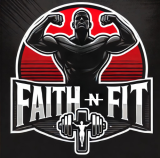Discover which exercise builds more muscle and strength in the debate between Leg Press vs Squat so you can train smarter and maximize leg gains starting today. If you want bigger, stronger legs, two exercises often come to mind: the leg press and the squat. But which one delivers better results? While both have their place in a good leg program, they serve different purposes—and knowing how to use them correctly can mean the difference between slow progress and massive gains.
Let’s compare the leg press vs squat using biomechanics, muscle recruitment, and progressive overload principles.
Leg Press vs Squat: What’s the Difference?
🏋️♂️ Squat
- A compound, free-weight lift that engages the entire body
- Requires core stabilization, balance, and mobility
- Involves quads, hamstrings, glutes, erector spinae, and abs
🦵 Leg Press
- A machine-based, seated movement
- Allows isolation of leg muscles without upper-body stabilization
- Primarily targets quads, glutes, and hamstrings
So which builds more muscle?
🧮 Answer: It depends on the goal—squats build functional strength, leg press builds targeted volume.
Muscle Activation: Which One Hits Harder?
According to EMG studies:
- Squats activate more total muscle, especially in the glutes and spinal erectors
- Leg press isolates the quads better and allows for more volume with less fatigue
Squats build athletic power and core strength. Leg presses build localized hypertrophy.
👊 Trainer Insight: Use squats to build a strong foundation. Use the leg press to finish the job with extra volume.
Strength Gains: What’s More Effective?
The squat teaches:
- Ankle, hip, and knee mobility
- Core control under load
- Force transfer across joints
The leg press:
- Allows heavier weights safely
- Reduces injury risk from balance/fatigue
- Doesn’t demand core or upper-body strength
🏆 Winner: Squats for strength. They’re more neurologically demanding and translate better to real-world performance and compound lifts like deadlifts.
Hypertrophy: Which One Builds Bigger Legs?
Muscle growth depends on:
- Volume (sets × reps × load)
- Time under tension
- Progressive overload
With leg press, you can:
- Do more reps and heavier loads
- Keep constant tension on the quads
- Train to failure safely
With squats, you’re limited by:
- Core fatigue
- Risk of form breakdown under high reps
📈 Best strategy: Combine both.
- Use squats for 3–5 sets of 6–8 heavy reps
- Use leg press for 4–5 sets of 10–15 reps to accumulate volume
Injury Risk and Recovery
- Squats require perfect form to avoid knee or lower back injury.
- Leg press reduces spinal load but can stress the knees or hips if you lower too deep or lift your hips off the seat.
⚠️ Form tip:
- Squat with neutral spine and heels flat
- On leg press, stop before knees pass your chest
Which Should You Do?
Here’s a quick decision guide:
| Goal | Best Choice |
|---|---|
| Full-body strength | Squat |
| Quad isolation | Leg Press |
| Athletic performance | Squat |
| Max muscle size | Both |
| Beginner safety | Leg Press |
| Posterior chain development | Squat |
🚀 Advanced Tip: Use pre-exhaustion by doing leg press first, then squats to burn out the legs faster while reducing spinal load.
Key Takeaway
Squats build strength and function. Leg presses build size and volume.
If you want the most powerful, muscular legs possible, you don’t need to choose—use both wisely. Train squats for strength, then finish with leg press for hypertrophy. Together, they form a perfect leg-day strategy for lifters at any level.
Start this week by combining 3 sets of squats and 4 sets of leg press—and track your reps, rest, and weight. Growth starts with the right plan.
Subscribe now and get a 14-day free trial workout app for iPhone users.



